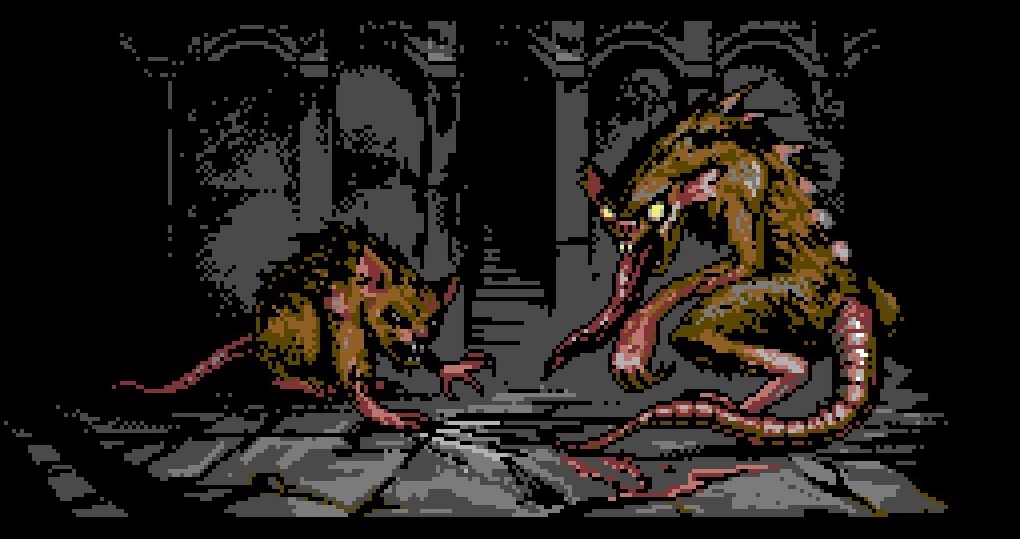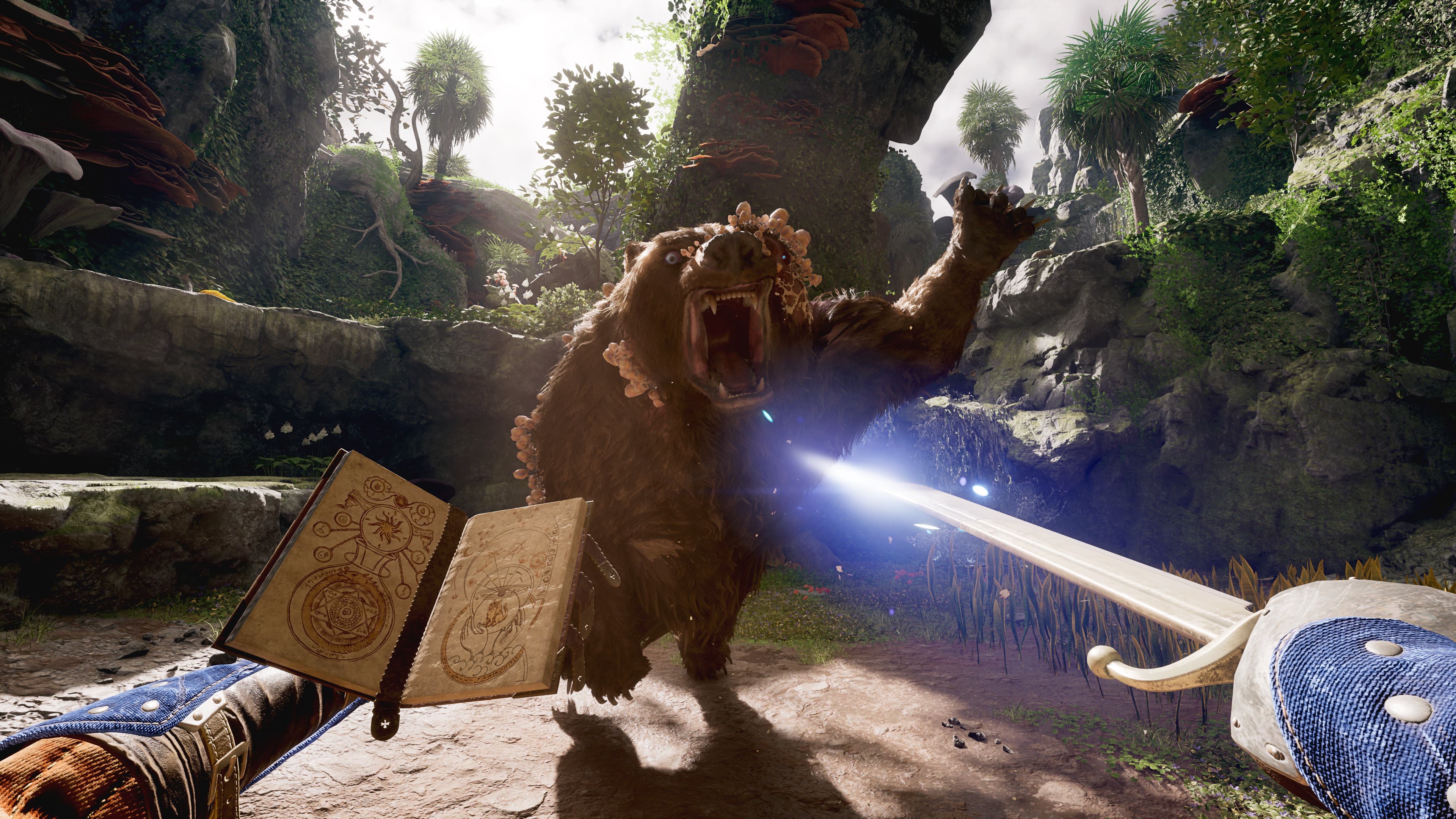
Skald: Against the Black Priory is a brilliantly unsettling blend of genres.
Everything about Skald: Against the Black Priory feels crafted to lull me into a false sense of security. With its wonderfully garish retro RPG visuals, familiar classes and character options, and simple turn-based combat, I keep being lured into thinking I’m just on a typical fantasy adventure. That only makes it all the more disturbing when I’m reminded that it’s not.
The game starts with a very well-worn RPG trope: you’re shipwrecked on an island with nothing but the clothes on your back and an important quest to fulfil (in this case locating a childhood friend who’s mysteriously gone missing). But all is not well here on Idra—a curse has befallen the island, transforming the wildlife into monsters and infecting the people with madness and plague. I’m yet to discover the source of this darkness (though I have my suspicions), but the result is plain: the land is suffused with Lovecraftian horror.
(Image credit: High North Studios AS)
On the surface, nothing I’ve been battling seems that out of the ordinary—I’m not new to being a level 1-5 adventurer, I’ve fought giant rats, angry crabs, and bandits before. But everything’s subtly wrong. The rats aren’t just giant, they’re taking on human-like traits—I get genuine chills when I meet their writhing, monstrous queen and discover she can talk. The crabs guard a hidden chamber where inscrutable experiments were conducted impossibly far in the ancient past—I claim a knife there that the local lighthouse keeper is so afraid of he begs me to destroy it. The bandits are crazed and fanatical, murdering and sacrificing everyone they can find—but it turns out they were ordinary fishermen before this all started. Were they driven insane, or were they always secretly in league with dark gods of the ocean?
Where the normal top-down view is reassuringly simple and unassuming, moments of discovery are marked with suddenly hyper-detailed pixel-art—a visual shock to go with the brief yet horrific descriptions. I’m reminded of another retro throwback, brilliantly creepy point-and-click game The Excavation of Hobb’s Barrow, which pulled a similar trick, contrasting periods of quiet puzzle-solving with sudden grotesque close-ups. But in that game the folk horror atmosphere was always there, keeping you perpetually on edge. Skald instead gives you just enough RPG busywork to keep you subtly distracted. After an hour of tinkering with my talent tree, sorting through my equipment, gathering vegetables to cook into an evening meal, and taking on simple sidequests, I almost drop into RPG auto-pilot. I don’t mean that it’s dull or rote, just that it just puts me in a totally different headspace than a horror game normally would—one that lets it keep surprising me with how dark and strange it’s ready to get.
(Image credit: High North Studios AS)
What’s crucial is that it doesn’t let the horror bleed into any of those core mechanics. Your characters have never seen anything like this before, and the world they grew up in was sane and normal—they have typical fantasy classes, they cook soups and pies and brew healing potions, they cast spells with names like Barkskin and Bear’s Strength. In other similar games you’ll often see a more horror-tinged approach to the character options, perhaps letting you start as an Occultist with strange powers of their own—that sets a tone, but there’s something so effective here about feeling like a standard D&D party that’s stumbled into a nightmare completely unawares.
It’s certainly got me hooked. Every human sacrifice, malevolent fungus, and idol of an elder god I discover makes me more and more intrigued to see how deep this rabbit hole goes—and how many more times Skald can take me by surprise. If you too can’t help but investigate that which will inevitably drive you mad, the game’s just become available on Steam today.





